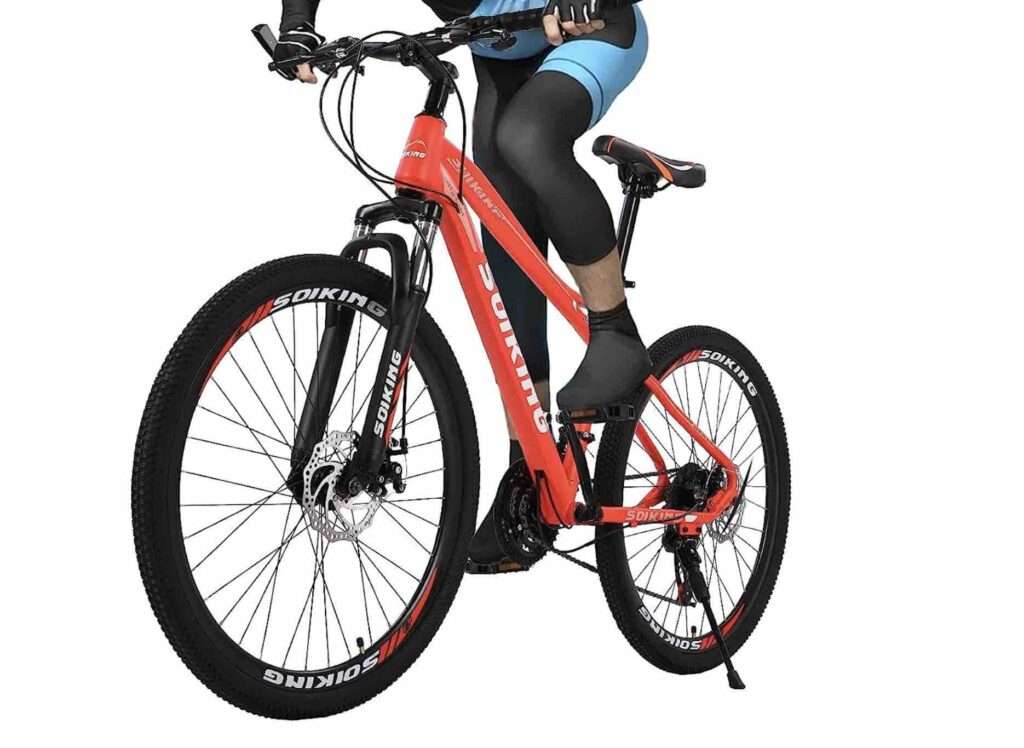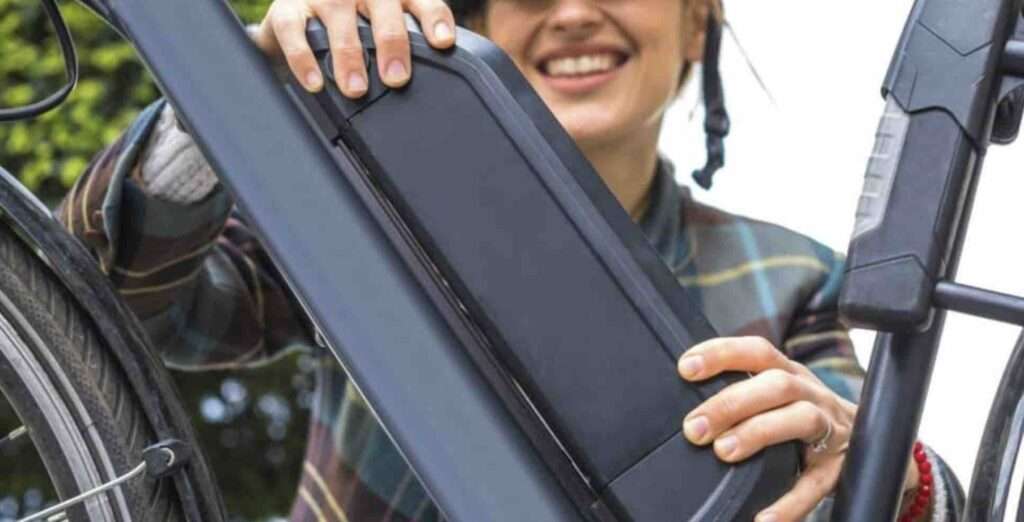The main highlight or outstanding feature of an electric bike is the ease of pedaling, thanks to the help of an electric motor that gets powered by a charged battery. Also, you might not have any pedaling to do, depending on the type of e-bike you own. Electric bikes with throttle do not need pedaling to move.
Yet, one of the common questions most electric bike owners or those intending to purchase one usually ask is: Do I have to pedal an electric bike uphill?
If you fall in the category, rest assured your question is valid, and this article will provide all the answers you need.
But before I delve into answering the question, let’s look at the two main types of electric bikes.

Types of Electric Bikes
There are various types of electric bikes, but two are worth mentioning in this context. They are Throttle and Pedal-Assist electric bikes.
The Throttle Electric Bike
Throttle electric bikes do not require pedaling because they have a throttle that powers the electric motor and leads to the acceleration of the bike. The throttle electric bike functions like a motorcycle, with the throttle in a similar handlebar position on the bike.
Once you engage the throttle by twisting the handlebar, the e-bike starts moving, and when you release your grip on the handlebar, the e-bike stops moving. In most advanced electric throttle bikes, the throttle is a button, and you can easily set the e-bike in motion with just the push of that button, which is in the handlebar.
The throttle electric bike is best for those who prefer a relaxed biking experience or those having mobility challenges.{1}
Pedal-Assist Electric Bike
The pedal-assist electric bike will require you to pedal before the bike accelerates, but much easier than traditional pedaling. The pedal-assist bike combines conventional pedaling with technology in the form of an electric motor to make bike riding seamless.
Pedaling activates the electric motor of the e-bike, which leads to acceleration. So, the harder you pedal, the faster the bike accelerates, which gives you or the rider absolute control over the e-bike’s speed whilst in motion.
If you fancy the traditional method of pedaling a bike for speed, this electric bike gives you that, with the added advantage of easier pedaling.
Can an Electric Bike Go Uphill
Definitely. In fact, some people purchase electric bikes for two reasons: the ease of riding uphill and for going against headwinds. The job of the electric motor in an e-bike is to make the process of riding a bike a lot easier, whether you are on a plain road or riding on a hill.
This ease of riding applies to both types of electric bikes. If your e-bike requires pedaling, climbing a hill will still be easier, although not as easy as one with a throttle, where you don’t need to pedal it uphill.
Can You Go Uphill on an Electric Bike Without Pedaling?
Pedaling an electric bike uphill depends on the type of electric bike you are riding. If you are using a pedal-assist electric bike, you have to pedal your way up the hill. However, with assistance from an electric motor, which simplifies riding a bike uphill, a process that would have been more tasking without technology.
On the contrary, you don’t need to pedal an electric bike uphill if you are riding a throttled electric bike. All you have to do is twist the throttle on the e-bike’s handlebar or a throttle button in more advanced e-bikes, and the bike can accelerate up the hill. Throttle electric bikes often come with varying power controls, giving riders the liberty to choose the level of power output they desire.
Riding up the hill is naturally strenuous and will require the highest power output possible. If you use an electric bike with a throttle in the form of a button, you either set the level-type mode to a desired power output or apply more pressure on the button to increase the power output.
The ease of accelerating up a hill with a throttle electric bike will also depend on the electric motor’s power and how steep the hill is.
How Far Can You Ride an Electric Bike Uphill Without Pedaling?
How far an electric bike can go up a hill depends on a few factors. For starters, the battery must be fully charged before ascending a hill. Driving up a hill consumes more battery power than on plain surfaces and will require a full charge.
This is a critical factor that will determine the distance or range the e-bike can cover up a hill. On a full charge, the battery can power the bike for up to 40 miles.
Other factors include the power capacity of the electric motor, how steep the hill is, and if the rider is carrying any load on the bike. The additional material load on the bike will make it heavier and affect its range potential.
If you’ll be driving uphill, it’s best to go without any baggage unless your essential gears are in the backpack. However, if the battery drains out before you arrive at your destination, you can always use the e-bike’s pedal to complete the rest of the journey traditionally.
What’s the Range of an Electric Bike?
If you purchased your electric bike for uphill riding only, you would still need to drive on a plain road before getting to the hill unless you live on the hill. So, it’s essential to know the range of your electric bike on land. And if you bought it just for the ease of riding around the city, this information is crucial.
The range of an electric bike is between 20 and 100 miles (32 and 160 kilometers per hour).
However, this range of your electric bike, or simply put: how far an electric bike can go on land, depends on its battery. Typically, electric bike batteries are measured in wattage and range from 200 to 1000 watts. If the battery has a high-power output, expect a long-range, and vice versa.
Meanwhile, achieving the full range of your e-bike is only possible when the battery is fully charged. If your e-bike’s range is 50 miles, that’s what you get on a full charge, and less if the battery is low.
Additionally, higher power outputs might make the battery heavier and more expensive. Hence, a 250w e-bike is probably enough to get by daily if you’re not a serious biker.
Factors That Can Affect the Range of E-bikes
Whether you are riding on a smooth road or uphill, your e-bike may not achieve its full range of potential if certain factors are at play. These factors include:
- Weight: The weight of the rider or load on the bike can impede speed and affect the e-bike’s range. The heavier the weight, the lesser the speed.
- Age: Older batteries might not perform optimally like newer versions. As batteries age, they may decline in capacity.
- Nature of the Road: The nature of the road is a critical factor in speed and range. Potholes, muddy tracks, and bumps can impede speed and subsequent range.
- The E-bike’s Tire: An e-bike tire with full pressure will improve speed and general performance. Always ensure your tire is fully pumped before heading out.
Can a 250W E-bike Go Uphill?
Yes, a 250w e-bike can drive uphill and reduce the task of pedaling on your end if it’s a throttle kind. The effectiveness of this uphill ride will depend on a few factors, such as torque, the electric motor’s location on the bike, and the electric motor’s quality.
Purchasing an e-bike from any e-bike industry giant will certainly improve your overall experience, especially when climbing hills. The reverse is the case for cheaper options or lesser-known brands.
The location of the electric motor on the e-bike is also a critical factor that determines how easy climbing a hill will be. If the electric motor is in the hub: the center of the e-bike’s wheel, it will be more difficult to go uphill. The electric motor at the rear or front hub of the bike creates an imbalance that will affect climbing a hill.
However, this issue of the electric motor location is peculiar to e-bikes that go uphill due to balance. Riding an e-bike with its electric motor on the rear hub may not create discomfort or challenges on a smooth road.
On the bright side, if the electric motor is in a different position other than the hub or wheels, riding your e-bike uphill will be speedy and seamless. Hence, mid-drive electric motors are the best for driving uphill.
Conclusion
Riding an e-bike uphill is much easier with additional accelerating power from an electric motor. Whether you have to pedal your way uphill or without pedaling will depend on the kind of e-bike you own. Throttle e-bikes don’t require pedaling, but pedal-assist e-bikes will need pedaling to facilitate easy movement. If you want to be fully committed to the bike-riding process, a pedal-assist e-bike is what you need. On the contrary, go for a throttle e-bike if you don’t want to sweat out the process, and there’s nothing wrong with being a lazy e-bike rider.




